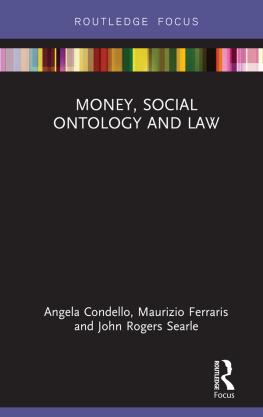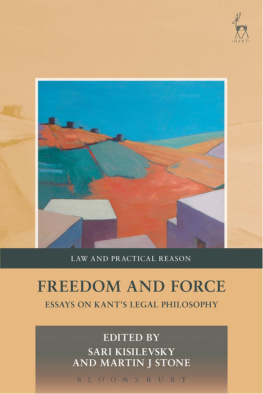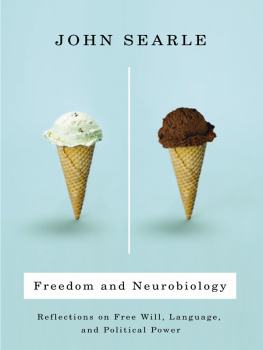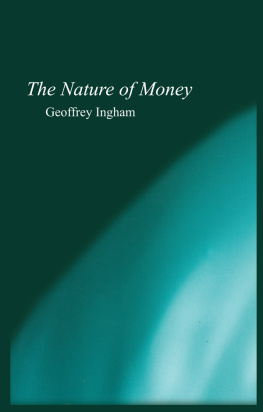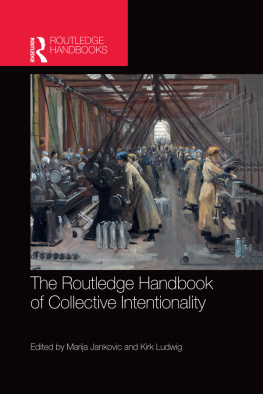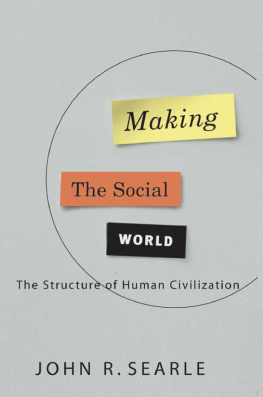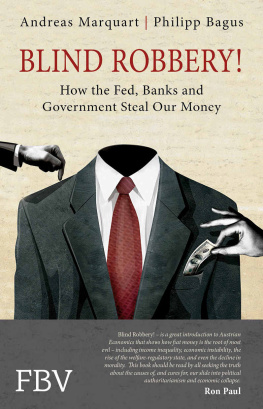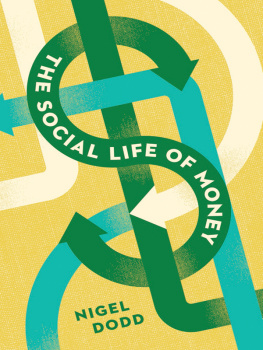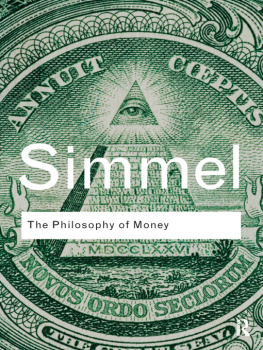The authors are very grateful to Einaudi, and in particular to Andrea Bosco, who first proposed and promoted the publication of Il denaro e i suoi inganni. They are also thankful to Mariano Croce and Marco Goldoni, who direct the Routledge series Law and Politics: Continental Perspectives. And, equally, to Colin Perrin.
Austin, J.L. (1962), How to Do Things With Words , Cambridge, MA: Harvard University Press.
Condello A., Searle, J.R. (2017), Some Remarks About Social Ontology and Law: An Interview With John R. Searle, in Ratio Juris , Vol. 30, No. 2, pp. 226231.
Condello, A., Searle J.R., Ferraris, M. (2018), Two Questions on the Ontology of Money. An Imaginary Dialogue Between John Rogers Searle and Maurizio Ferraris, in Ardeth , 3/2018, pp. 181191.
Croce, M. (2018), The Politics of Juridification , London: Routledge.
Debray, R. (2001), Dieu, un itinraire. Matriaux pour lhistoire de lternel en Occident , Paris: Odile Jacob.
De Jorio, A. (1832), La mimica degli antichi investigata nel gestire napoletano , Napoli: Stamperia del Fibreno, facsimile Sala Bolognese, A. Forni, 2002.
Dennett, D.C. (2017), From Bacteria to Bach and Back: The Evolution of Minds , Cambridge, MA: Bradford Books/MIT Press.
Derrida, J. (1968), La diffrance, in Id., Marges de la philosophie , Paris: ed. de Minuit, 1972.
. (1971), Signature, vnement, contexte, poi in Id., Marges de la philosophie , Paris: ed. de Minuit, 1972.
. (1988), Limited Inc ., Evanston, IL: Northwestern University Press.
De Soto, H. (2000), The Mystery of Capital: Why Capitalism Triumphs in the West and Fails Everywhere Else , New York, NY: Basic Books.
Epstein, B. (2015), The Ant Trap: Rebuilding the Foundations of the Social Sciences , Oxford: Oxford University Press.
Ferraris, M. (1997), Estetica razionale , Milano: Cortina, 2011.
. (2001), Il mondo esterno , Milano: Bompiani.
. (2004), Goodbye Kant! What Still Stands of the Critique of Pure Reason , New York: SUNY Press, 2013.
. (2005), Where Are You? Ontology of the Mobile Phone , New York: Fordham University Press, 2014.
. (2009), Documentality. Why It Is Necessary to Leave Traces , New York: Fordham University Press, 2012.
. (2014), Mobilitazione totale , Roma-Bari: Laterza.
. (2016), Emergenza , Torino: Einaudi.
. (2017), Postverit e altri enigmi , Bologna: il Mulino.
Guala, F. (2016), Understanding Institutions: The Science and Philosophy of Living Together , Princeton, NJ: Princeton University Press.
Jameson, F. (1999), The Theoretical Hesitation. Benjamins Sociological Predecessor, in Critical Inquiry , Vol. 25, No. 2, Angelus Novus: Perspectives on Walter Benjamin, pp. 267288.
Lawson, T. (2016), Social Positioning and the Nature of Money, in Cambridge Journal of Economics , Vol. 40, No. 4, pp. 961996.
McGinn, C. (2015), Prehension , Cambridge, MA: The MIT Press.
Maddalena, G. (2015), The Philosophy of Gesture , Montreal and London: McGill-Queens University Press.
Madero, M. (2012), Interpreting the Western Legal Tradition. Reading the Work of Yan Thomas (transl. by Kathleen Guilloux), 1 Annales, in Annales. Histoire, Sciences Sociales , pp. 103132.
Marconi, D. (1997), Lexical Competence , Cambridge, MA: The MIT Press.
Mauss, M. (1925), The Gift. Forms and Functions of Exchange in Archaic Societies , transl. by Ian Cunnison, London: Cohen and West.
Menger, K. (1892), On the Origin of Money, in The Economic Journal , Vol. 2, No. 6. (Jun., 1892), pp. 239255.
Mulqueen, T., Matthews, D. (2015), Being Social: Ontology, Law, Politics , Oxford: Counterpress.
Pareyson, L. (1950), Estetica. Teoria della formaticit , Milano: Bompiani, 1989.
Pascal, B., Penses , ed. by Lon Brunschvicg.
Romano, S. (1983), Frammenti di un dizionario giuridico , Milano: Giuffr.
Schiavone, A. (2005), Ius. Linvenzione del diritto in Occidente , Torino: Einaudi.
Searle, J.R. (1995), The Construction of Social Reality , New York: The Free Press.
. (2010), Making the Social World: The Structure of Human Civilization , Oxford: Oxford University Press.
. (2017), Money: Ontology and Deception, in Cambridge Journal of Economics , Vol. 41, pp. 14531470.
Searle, J.R., Ferraris, M. (2018), Il denaro e i suoi inganni , ed. and with an essay by A. Condello, Torino: Einaudi.
Searle, J.R., Smith, B. (2003), The Construction of Social Reality: An Exchange, in American Journal of Economics and Sociology , Vol. 6, No. 2.
Sermonti, G. (2009), Lalfabeto scende dalle stelle. Sullorigine della scrittura , Milano-Udine: Mimesis.
Simmel, G. (1900), The Philosophy of Money , London and New York: Routledge, 2004.
Simondon, G. (1958), Du mode dexistence des objets techniques , Paris: Aubier-Montaigne.
Spengler, O. (1918), Der Untergang des Abendlandes. Umrisse einer Morphologie der Weltgeschichte , Wien: Verlag Braumller.
Thomas, Y. (1995), Fictio legis , ed. by Michele Span and with and essay by M. Span and M. Vallerani, Macerata: Quodlibet, 2016.
. (2002), Il valore delle cose , ed. by Michele Span and with essays by G. Agamben and M. Span, Macerata: Quodlibet, 2015.
Vico, G.B. (1744), La scienza nuova , in The New Science of Giambattista Vico: Unabridged Translation of the Third Edition (1744) With the Addition of Practic of the New Science , Ithaca: Cornell University Press, 2016.
Warburton, W. (1742), The Divine Legation of Moses Demonstrated , ripr. della ed. 1765, New York and London: Garland, 1978.
Zagrebelsky, G. (2012), Simboli al potere , Torino: Einaudi.
1
Money
John Rogers Searle
I hold in my hand a United States $20 bill. It is, like most things we take for granted, philosophically astounding. (One mark of a philosopher is to be amazed by what any sane person takes for granted.) The bill contains a lot of writing, much of which is the repetition of the number twenty, eight times in numerals and three times in words, Twenty Dollars twice and Twenty once under a seal. It contains only two sentences: This note is legal tender for all debts public and private (How do they know?) and In God we trust (What happens to those who do not trust in God? Is it not money for them?). It also contains pictures of Andrew Jackson and the White House, and various seals and serial numbers as well as the words Federal Reserve Note. The United States of America occurs on both sides. This chapter is primarily concerned with the question: What fact or facts make this a piece of paper money? To understand why it is money and what it means to be money you have to understand a whole civilization. I will not explain the whole civilization, but I will explain some of the money part. In writing this text, I discovered a series of deceptions (illusions, systematic falsehoods) in the institution of money, and I will try to identify them.
I also have on my computer screen a photograph of a Confederate $100 bill. It is even more amazing. It says The Confederate States of America will pay the bearer $100 on demand; all of that is in large print. But in much smaller boxes on each side of a picture of an unnamed woman, it says, two years after the ratification of the treaty of peace, then in the next box, between the Confederate States of America and the United States of America. Though both bills are supposed to function in the same way, as money, their status as speech acts is quite different. The American bill is a Declaration. By Declaration, this piece of paper counts as $20 in the United States. The Confederate money is a Commissive, a complex conditional promise. It says the government promises to pay the bearer on two conditions: first that there is a ratified treaty of peace between the Confederate States of America in the United States of America, and second that two years have passed since the peace was ratified.

